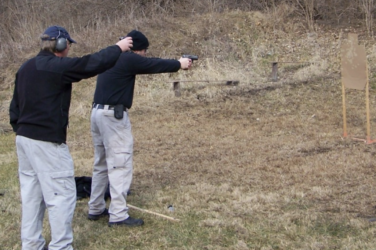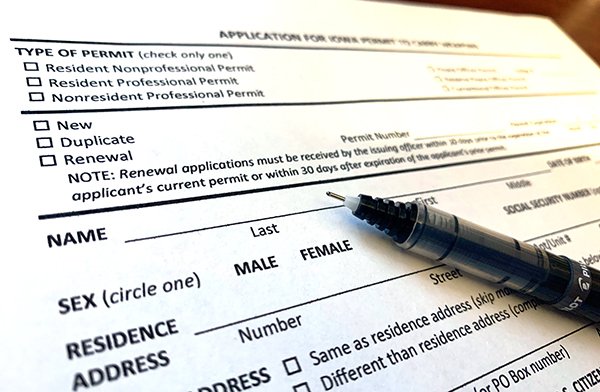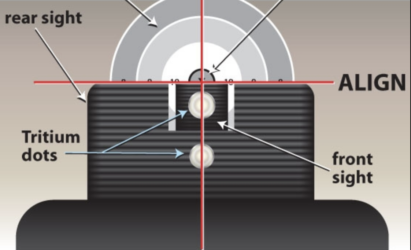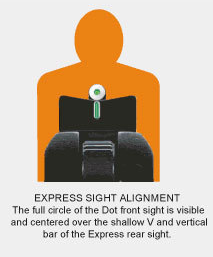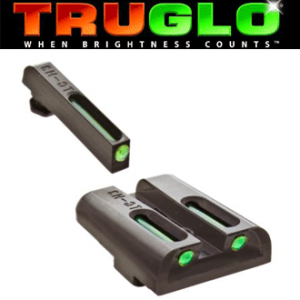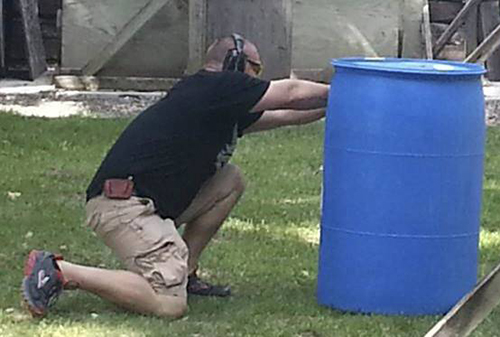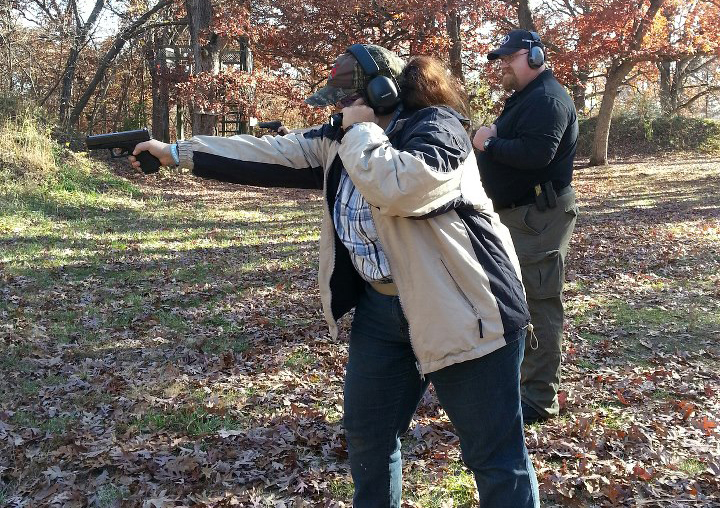CWR is excited to add Red Dot Defensive Pistol. This 6 hour course is designed to give law abiding citizens of every level a path to shooting a red dot equipped pistol more accurately and efficiently. The red dot pistol is certainly here to stay – come learn how to run the gun to its full potential.
Topics Covered
● Zeroing your red dot. 10 yard zero. 25 yard confirmation.
● The Draw and how to find the dot.
● Red dots at any distance from contact to as far as you can accurately shoot.
● Tracking the dot in recoil.
● How to practice on your own.
● Target transitions
● Shooting on the move
Equipment needed:
● Slide mounted red dot pistol.
● The ability to carry 3 mags(1 in gun, 2 in pouches or pockets).
● Good holster of student’s choice. No Serpas. No old leather holsters.
● 200 rounds of reliable ammo.
● Eye and hearing protection.
This is not a beginner course. Students should already be able to safely draw, holster, reload and generally handle a firearm. Course is limited to 6 people and the course fee is $150 (due at the start of class by cash or check).
 Darin
Darin
10 Minute Medicine – Lifesaving Training Course
CWR is pleased to offer a lifesaving course. Ten Minute Medicine is an absolute must for anyone serious about their own safety and the safety of loved ones. The first time you use medical gear should not be when it counts; get trained on proper equipment and its application. This course will prepare you to deploy lifesaving measures for yourself and others.
By the end of the Ten Minute Medicine course, students will:
- Recognize the causes of preventable death and be able to treat victims of penetrating trauma.
- Learn basic human anatomy and the signs and symptoms of shock.
- Discuss emergency stress reduction techniques, expectations, and communication with 911 dispatchers in the event of an emergency.
- Learn about the Iowa Trauma System, local community capability and resources in regards to trauma victims.
- Understand wound ballistics on the human body from various weapon types.
- Have hands on training with and demonstrate the use of tourniquets, chest seals, bandages, hemostatic agents, and airway management techniques.
- Learn various emergency lifts and carry techniques.
- Participate in realistic scenarios, testing the ability to rapidly assess victims for life-threatenin
g injuries, and the application of first aid devices in a high stress environment. - Discuss the newest first aid kits and equipment available to the public.
Cost of the course is $60 per student. Space is limited to 8 students. Online registration is available here: http://cwrfirea
For additional information about this course, please email Nate at nate@cwrfirearm
Principles of Armed Self-Defense – The Next Step in Learning to Defend Yourself
When I started in law enforcement 10 years ago I had my first experience with formal self-defense training. The training was great and I felt like I was prepared for anything. I was proficient in several weapon systems and I was proficient in fighting hand to hand; but I wasn’t proficient in fighting to my weapon, or fighting with my weapon in close quarters. My training just didn’t address the area where these worlds overlap. This training gap is even more prominent for the everyday citizen who doesn’t get hours of training every year, or deal with combative people on a regular basis.
While range and classroom drills are vital to learning to defend yourself they rarely go beyond mental scenarios and square range drills. Standing face to face with a stationary target is a great way to learn and practice the fundamentals of shooting but this will rarely translate directly to the real world. This isn’t to say these type of drills aren’t important; they just aren’t enough. The problem is that there is never enough time in these classes to cover everything that is necessary. Even if there were, your mind can only absorb so much information at a time.
For these reasons I began working with Darin VanRyswyk and CWR Firearms Training to develop a class that would address this training gap. The goal was to develop a course that would build a strong foundation on which a house of self-defense could be built. Principles of Armed Self-Defense is designed to build a reliable foundation upon which any weapon can be inserted. If you already carry a weapon this is the next step in the self-defense training progression. If you are just considering self-defense and you are new to training this is your chance to start with a clear lot and begin building good habits. While the course is primarily designed around the use of a firearm the principals are meant to translate to other self-defense weapons. Whether you carry pepper spray or a knife, or simply need to rely upon your hands & feet this course is meant for you.
In order to be efficient and effective in defending yourself you must learn to use your mind and body together. In this course we start with a 4 part concept for addressing potential, or actual, threats. This prepares the mind. The goal is to avoid conflict and deal with it efficiently if avoidance is not possible.
We then build a strong defensive stance and learn how to use the structure of the body to protect oneself without wasting energy. This is the foundation of the house and the structure on which the entire defensive process sits. Next, we add in footwork and principles of creating distance and angles. Think of this as grading the dirt around the foundation to protect it from damage.
Next we cover weapon retention so your weapon isn’t taken and used against you, or deflected off target making it ineffective. Where you carry your weapon, and how you present it, can have a major impact on the outcome of a use of force encounter. Finally we cover accessing weapons from a variety of positions and situations because it is never as simple during a real incident as it was on the range.
During this class you will build a strong foundation to protect yourself and efficiently access your weapon, if necessary, in a use of force encounter. It is truly the next step in learning to defend yourself whether you intend to use a weapon, or not.
For more information on this new course please contact Eric@cwrfirearmstraining.com.
Renewing your Iowa Permit to Carry Weapons
With renewals for the Iowa Permit to Carry Weapons fast approaching in the next year, we have scheduled a variety of courses to meet your training needs. Most of our courses are 4-hrs in length to more easily accommodate busy schedules, additionally we also offer the live-fire re-qualification session which takes about an hour, as well as full-day courses for students who want/need more training.
The renewal permit requires that the applicant complete training or re-qualify – please read IA Code 724.9 & 724.11 – https://www.legis.iowa.gov/DOCS/ACO/IC/LINC/Chapter.724.pdf
Training or live-fire re-qualification must take place within 12 months of the permit expiring. Furthermore, applicants must apply at least 30 days prior to the permit expiring – I recommend applying 6 weeks before your permit expires. This gives you about a 10 month window to complete your training. If your permit expires March 2, 2016 for example, complete you training prior to the middle of January, and consider applying for your renewal permit before the end of January. This will ensure that your renewal application is processed before your permit expires.
We will schedule additional courses and frequently run private training courses for our students. For additional information about any of our training options we are just a phone call or email away and we look forward to answering your questions – darin@cwrfirearmstraining.com / 5l5-23l-3887
Sights, Sights, Sights – Thoughts on defensive sights
A student called to ask what my thoughts were related to sights for a home defense pistol. He asked what I thought about tritium night sights, fiber optic sights, and gold bead sights for his pistol. He planned to equip the pistol with a rail mounted light, which can be a very useful tool (see post on weapon mounted lights). Fiber optic and brass dot sights are designed for competition shooting, which is traditionally held in a bright environment, though occasionally, there are low light defensive pistol matches.
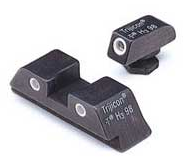
For a defensive pistol, it is hard to beat tritium sights. Small, tritium inserts which glow in the dark, help an armed officer or law abiding citizen acquire their sights under reduced light and no light conditions. Clearly there are situations where a person will not use their sights (instinctive shooting), but tritium sights give you an option that traditional sights do not. Made by several manufacturers, the two brands of tritium sights that I prefer are the Heinie Straight Eight LEDGE sight and the XS 24/7 Express Sights.
Richard Heinie makes some of the best sights on the market. They are high quality, precise sights and are worth the money. Having carried various pistols over the years, I‘m familiar with the traditional Trijicon tritium 3-dot sight. This sight requires the shooter to line up the 3 tritium lamps horizontally with the front sight dot between the two rear dots. These sights work fine and are very common. The Heinie Straight Eight is a vertical sight. There are only two tritium lamps in this design. The shooter “stacks” the two dots to line them up, giving the appearance of an “8”, hence the name “Straight Eight”. Heinie builds excellent target sights; the Straight Eight night sights are high quality target sights that have tritium inserts added. Additionally, sharp edges that are common to match sights are not present on Heinie defensive sights. This allows the shooter to quickly load, reload, and clear stoppages without the added risk of injury to the support hand.
Similar to the Heinie Straight Eights, the XS Sights 24/7 Express Sights utilize a vertical sight alignment. The Express Sights incorporate a “Big Dot” Tritium or “Standard Dot” Tritium front sight with a vertical tritium “post”. This is one of the best “flash” sights on the market for day light engagements, and an excellent setup for low light environments. The Express sight also offers a low profile, snag-free design that reduces the likelihood of injuring the support hand, while allowing the shooter to use the rear sight as a slide-racker during incapacitation drills/incidents. Personally, I prefer the “regular” dot to the “Big” dot, but that is simply my preference.
One additional sight that I wanted to mention is the Truglo TFO or Tritium Fiber Optic Sight. Years ago when fiber optic sights first hit the market, I put a set on a Glock 22 that I used for IDPA. I loved how quickly I could acquire those sights. They weren’t quite as accurate as I wanted, but they were fast for the 5-10 yard scenarios. My daily carry pistol back then was a Glock 23. I had factory Glock Trijicon tritium night sights on it which were fine in low light, but I wanted the same “glow” that I had at night, during the day. I discovered the TFO sights and quickly bought a set and mounted them to my G23. They took a bit of getting used to, but they turned out to be good all-day sights. The only drawback was the length of the front sight. The design of the sight put a fiber optic rod in front of a tritium lamp. During normal light the fiber optic rod would glow from ambient light. During low light conditions it would transmit the tritium glow. The issue was that the front sight was nearly an inch long, which meant that the effective sight radius was reduced by nearly an inch. On a Glock 23 that’s almost a 20 percent reduction in sight radius, which equates to a less accurate pistol. This is simply a tradeoff. You are trading the ability to shoot a little more accurately in one lighting condition for the ability to acquire your sights faster (or simply acquire them at all) in all lighting conditions. To that end, I like the TFO sights; they serve their purpose well.
In the end, the sight you choose should be one that works well for you. Most factory sights are simple and get the job done, but leave something to be desired. When changing a sight, it is important to have it installed by a competent gunsmith or armorer, and to benchrest the pistol to ensure the sights are zeroed for you. Finally, it is very easy to get caught up in the “equipment race” trying to find that perfect sight that will prevent you from ever missing. Remember most shooters need practice, not new equipment. It takes a lot of work to develop the ability to out-shoot a stock defensive pistol. Invest in good quality equipment and then safely practice with your equipment to develop this life-saving skill.
What are you looking for in a training course?
Over the years we’ve run several different classes based on what we believe students will benefit most from regardless of their skill level. Since 2011 we’ve been very busy with our Iowa Permit to Carry classes, which affect how often we can run other classes. This year we cut back on permit to carry classes and offered more instructor courses and more shooting classes, the biggest increase was in private training lessons (one-on-one). As we’ve worked with different students we’ve learned more about what students are looking for. I want to know – what you are looking for in a training course? Do you want more information or more skill development? Do you want a 4 hour class, a 1 day class or a multi-day class? Are you interested in low light training, in force-on-force training, on edged-weapon defense, on ground fighting and weapon retention? Do you want defensive rifle, shotgun, and pistol courses or simply basic courses? Would you be interested in a course on competitive shooting? Please use the “comment” feature and let me know what you are looking for in a training course or courses and we will do our best to offer these courses.
Thanks for your continued support!
8-hr Iowa Permit to Carry Weapons Course
- Review of Safe Gun Handling skills
- The Defensive Mindset & Tactical considerations
- Legal Aspects of Concealed Carry & Self-Defense
- Interactions with Law Enforcement
- Dealing with the Aftermath of a Shooting
- Equipment Selection
- Continued training options
- 30-round live fire qualification course (optional)
- Dry technical skill development (elements of marksmanship, draw, presentation, loading, unloading, and reloading)
Thoughts on ammo and defensive pistols….
A week ago a buddy asked me what my thoughts were on the .40 S&W round. While I’ve carried it and the .45 ACP for nearly 20 years, over the past 5 years, significant improvement in the performance of the 9mm round has led me back to the notion that I would rather carry more, smaller rounds that fewer, bigger rounds (specifically the 9mm vs. .40 S&W & .45 ACP). He also asked the standard “what’s the best defensive pistol on the market” question – I answered that a few different ways. Here is my reply to his questions:
The primary difference between the 9mm and the 40 S&W (aside from the diameter) is the internal chamber pressure of the round. Most 9’s run around 25,000 psi (give or take) while the 40’s run around 35,000 psi. The pressure is a major function in “felt” recoil, which has a profound effect on how well and quickly a person can shoot a given pistol. Specifically the higher the pressure the more quickly the energy is transferred back to the shooter, so the .40’s snap a bit more than the 9mm’s, even though the have about the same amount of energy. With advances in bullet technology over the past 20 years, we have much better terminal ballistics with a modern 9mm today (Speer Gold Dot, Winchester PDX1, Hornady Critical Duty) than we did out of 45 ACP’s twenty years ago. The development of the .40 (actually the 10mm) was an attempt to get the round capacity of a 9mm with terminal ballistics of a 45. Today, you can do so much more with a 9mm and carry more rounds. Add to this, the data that supports that 9mm Speer Gold Dots “over-penetrate” less than 40’s or 45’s and you have a very useful cartridge. If left with no other option, but to use deadly force, the option of shooting (at) the bad guy with 2 rounds of 9mm vs. 1 round of 45 increases the likelihood that the bad guy’s deadly action would cease; since many 9mm pistols carry twice as many rounds as 45 acp pistols that option exists. Also, 9’s are generally cheaper to shoot than most other defensive caliber pistol rounds, so you can practice more often, which is frequently the most important factor is prevailing in a deadly force encounter
Now, what is the best “defensive” handgun on the market? I can answer that a couple of different ways (1) “Whatever is incredibly reliable and the person shoots best“; I really don’t believe in a one-size-fits-all solution to this question. I do believe the gun should be chambered in 9mm or .38 spl or larger (no magnums unless concerned with bears, wolves, cats or moose); (2) “The Glock 19“. It is the correct size to carry concealed for many people in a strong side hip holster. It holds a 15+1 rounds of 9mm and it will take the G17 mags, so you can carry 16 rounds in the pistol and have a 17 round magazine as a spare. For a smaller framed person, I’d go with the G26 simply for concealment issued. If carrying concealed was not an issue, then I’d strongly consider the Glock 17. I believe the S&W M&P is just as good of a pistol and it works better for left-handed shooters, plus it has better magazines. The Steyr M9A1 (often over-looked) is one of the best point-shooting pistols ever made and it is the same size as the G19 – that should also be a strong consideration.
To help support my claim, some of the best instructors throughout the country (you’ll have to look them up) have given up their 1911’s for 9mm Glocks (or M&P’s / Springfield XD’s).
If you agree or disagree, feel free to share your thoughts on the comment page.
God Bless America!
Benefits of competitive shooting
If you’ve spent time training with me, Nate, or Josh you have likely heard us refer to shooting IDPA and USPSA matches. The focus of this post is help illustrate why we believe competitive shooting is useful as part of your defensive training regimen. Additionally I will point out some limitations of defensive-style matches with regards to training.
When developing defensive functionality, instructors often balance marksmanship, mechanics, and mindset in their students’ development. This is a simple relationship, but often these simple concepts are over-taught, leading to distraction & confusion by students. While participating in a match, you are not the student, nor the instructor, you are all competitors, trying to perform at your best. Learning that you are not competing against other participants, but competing against yourself if the first step to accepting that shooting matches are ultimately about improving your own skill sets. 
If a new participant can move past the “I’m not into competition” mindset and accept the skill development argument, we being with mechanics. The following mechanical skills are developed through defensive pistol (and 3-Gun) competitions: Accessing the pistol (draw), presentation, safe handling, loading, unloading, reloading, bi-lateral shooting (right or left hand), position changes, interactions with barricades, movement with gun in hand, and malfunction clearance [inevitably this happens to all of us – even Glock shooters from time to time 🙂 ]
Marksmanship is developed by learning to engage targets very quickly at common defensive distances (less than 7 yards), while also improving marksmanship skills at distances of 25-30 yards occasionally. Additionally, matches frequently including engaging targets that move, turn, drop, appear, disappear, swing, retreat, or charge the competitor. There are few other opportunities where a person can practice engaging moving targets.
The crux of defensive pistol matches is the scoring system, which is based on a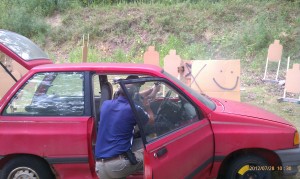 combination of time, plus points incurred for poor marksmanship & penalties from failing to follow prescribed actions or for engaging non-threat targets. Herein lies the basis for the true benefit of competition: time-induced-stress. Clearing a true defensive shooting is likely to be a very stressful event for anyone. In traditional marksmanship practice, while shooting bulls-eye targets or plinking pop-cans, there is not an urgency to get the shot off, simply a focus to get the hit, however if you race a friend to see who can knock a pop-can over first, marksmanship typically erodes quickly. This time-induced-stress is at first tough to deal with. It reduces our marksmanship and in some cases, erodes our manipulations too. Add in a few non-threat targets which force the competitor to distinguish between threat targets and innocent by-standers and you have a training scenario that helps develop stronger marksmanship, mechanics, and mindset.
combination of time, plus points incurred for poor marksmanship & penalties from failing to follow prescribed actions or for engaging non-threat targets. Herein lies the basis for the true benefit of competition: time-induced-stress. Clearing a true defensive shooting is likely to be a very stressful event for anyone. In traditional marksmanship practice, while shooting bulls-eye targets or plinking pop-cans, there is not an urgency to get the shot off, simply a focus to get the hit, however if you race a friend to see who can knock a pop-can over first, marksmanship typically erodes quickly. This time-induced-stress is at first tough to deal with. It reduces our marksmanship and in some cases, erodes our manipulations too. Add in a few non-threat targets which force the competitor to distinguish between threat targets and innocent by-standers and you have a training scenario that helps develop stronger marksmanship, mechanics, and mindset.
Now I refer back to the beginning of this article, where I referenced that defensive pistol matches can be a useful PART of your training regimen. And that is important to remember. First, matches are games. You will not be attacked by a horde of cardboard targets. You will not receive a 5 second penalty for engaging a non-threat (think prison), and you will not get a re-shoot if your equipment fails (think seriously injured/dead). Additionally, some matches do not require the proper use of cover or other commonly accepted tactics – or realize that the best tactic for the challenge that confronts you in real life might be to flee, or draw your pistol and NOT shoot – that won’t work with a defensive competition where you need to be given a scenario where you must shoot in order to have a score. In fact in 100% of defensive matches, when the buzzer goes off you it is understood that you will NEED to fire; whereas in real life, there’s no buzzer and no absolutes. Likewise, as much as we try to level the playing field, many competitors use full-sized guns for matches coupled with holsters selected for competition over carry/concealment, but they choose to carry compact sized pistols for self-defense. It can be difficult to compete when it turns into an equipment race. That brings me once again to the point that if you use defensive matches as part of your personal, defensive training program, you are only competing with yourself, which should take the equipment race out of the equation; it becomes about performing well with the equipment you actually carry.
I could certainly continue to enumerate the downside to competitive defensive matches as a form of training, but my point is that they simply need to be PART of the training program. Which needs to include scenarios where you have to decide if you shoot or not, where you have to deal with a sea of non-threats and only 1 or 2 “bad guys”, and where you develop scenarios that are realistic for the environment that you operate in – your home, your work, your life.
On a final note, I will add this. I’ve shot competitively for about 15 years. During this time I’ve come to realize that some of the best people in our society participate in these matches. Moms & dad, brothers & sisters, husbands & wives, sons & daughters, all sharing knowledge, while exercising their rights to freedom of assembly, freedom of speech, and freedom to keep and bear arms. They are making our country & our society stronger and building lasting friendships along the way. You can learn more about defensive shooting at the following sites:
http://www.uspsa.org/
Finally, here is a link to an excellent article by Phil Strader, Director of Competitions at the U.S. Shooting Academy™ in Oklahoma City, OK.
Happy Holidays from CWR
As we celebrate the holidays and roll in the new year, please accept our thanks for a fantastic year of training. We are developing a 2013 training calendar and will continue to offer private courses scheduled directly with students. Please let us know if there are any classes you are interested in by posting to the comments section or via email / phone.
